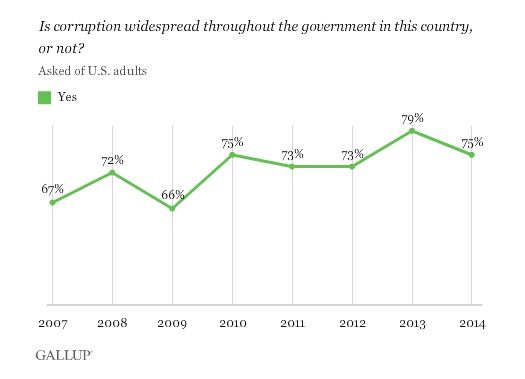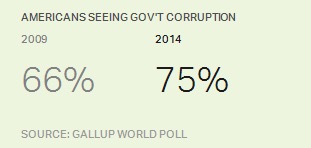While the numbers have fluctuated slightly since 2007, the trend has been largely stable since 2010. However, the percentage of U.S. adults who see corruption as pervasive has never been less than a majority in the past decade, which has had no shortage of controversies from the U.S. Justice Department's firings of U.S. attorneys to the IRS scandal.
These figures are higher than some might expect, and while the lack of improvement is somewhat disconcerting, the positive takeaway is that Americans still feel fairly free to criticize their government. This is not the case in some parts of the world. Questions about corruption are so sensitive in some countries that even if Gallup is allowed to ask them, the results may reflect residents' reluctance to disparage their government. This is particularly true in countries where media freedom is restricted.
This is why it is most appropriate to look at perceptions of corruption through such lenses as the Freedom House's Press Freedom rankings. Ratings vary among countries with a "free press," including the U.S., and range from a high of 90% in Lithuania to a low of 14% in Sweden. The U.S. does not make the top 10 list, but notably, it is not far from it.
Comment: The CIA controls most the what is covered in the main stream media. Journalists are bought, taught to lie and falsify stories. And if if they don't tow the line... On the strange death of Michael Hastings: Was the reporter car-hacked or bombed?
These data are available in Gallup Analytics.
Survey Methods
Results are based on telephone interviews with approximately 1,000 U.S. adults each year, aged 15 and older, conducted between 2007 and 2014. For results based on the total sample of national adults in the U.S., the margin of sampling error has typically been ±4.0 percentage points at the 95% confidence level.
For results based on the total sample of national adults across the 134 countries surveyed in 2014, the margin of sampling error ranged from ±2.1 percentage points to ±5.6 percentage points at the 95% confidence level.
The margin of error reflects the influence of data weighting. In addition to sampling error, question wording and practical difficulties in conducting surveys can introduce error or bias into the findings of public opinion polls.





Gallup is part of the mainstream, CIA-controlled media. So chances are, if they were TRUTHFULLY reporting the US public's perception of corruption in US government, the poll would show that 99% believe that there is widespread corruption in US government (there's always going to be at least 1% who keep their heads in the sand, no matter what.)